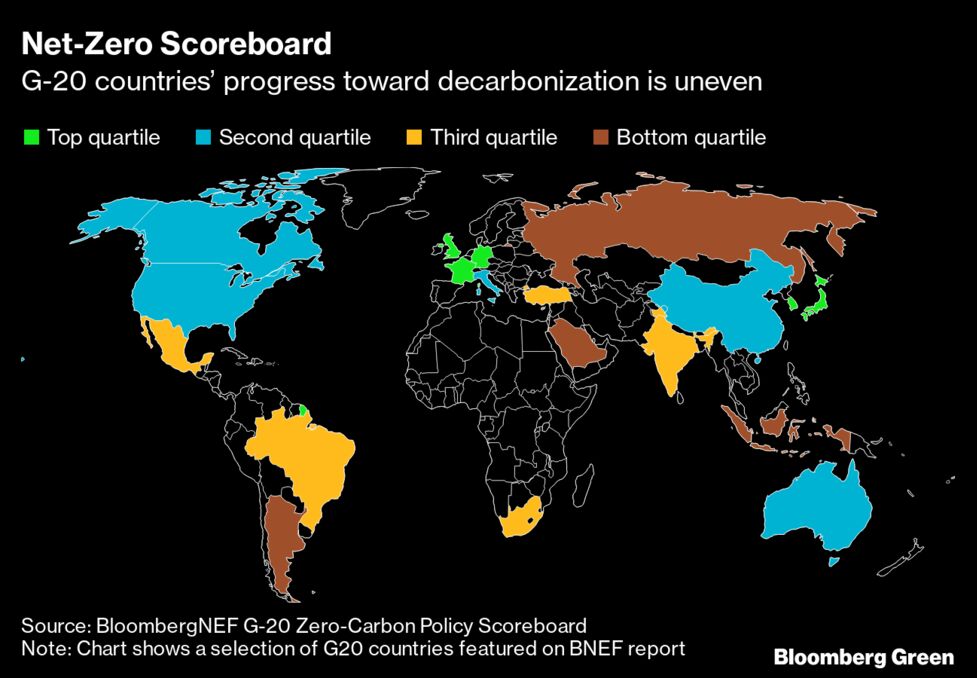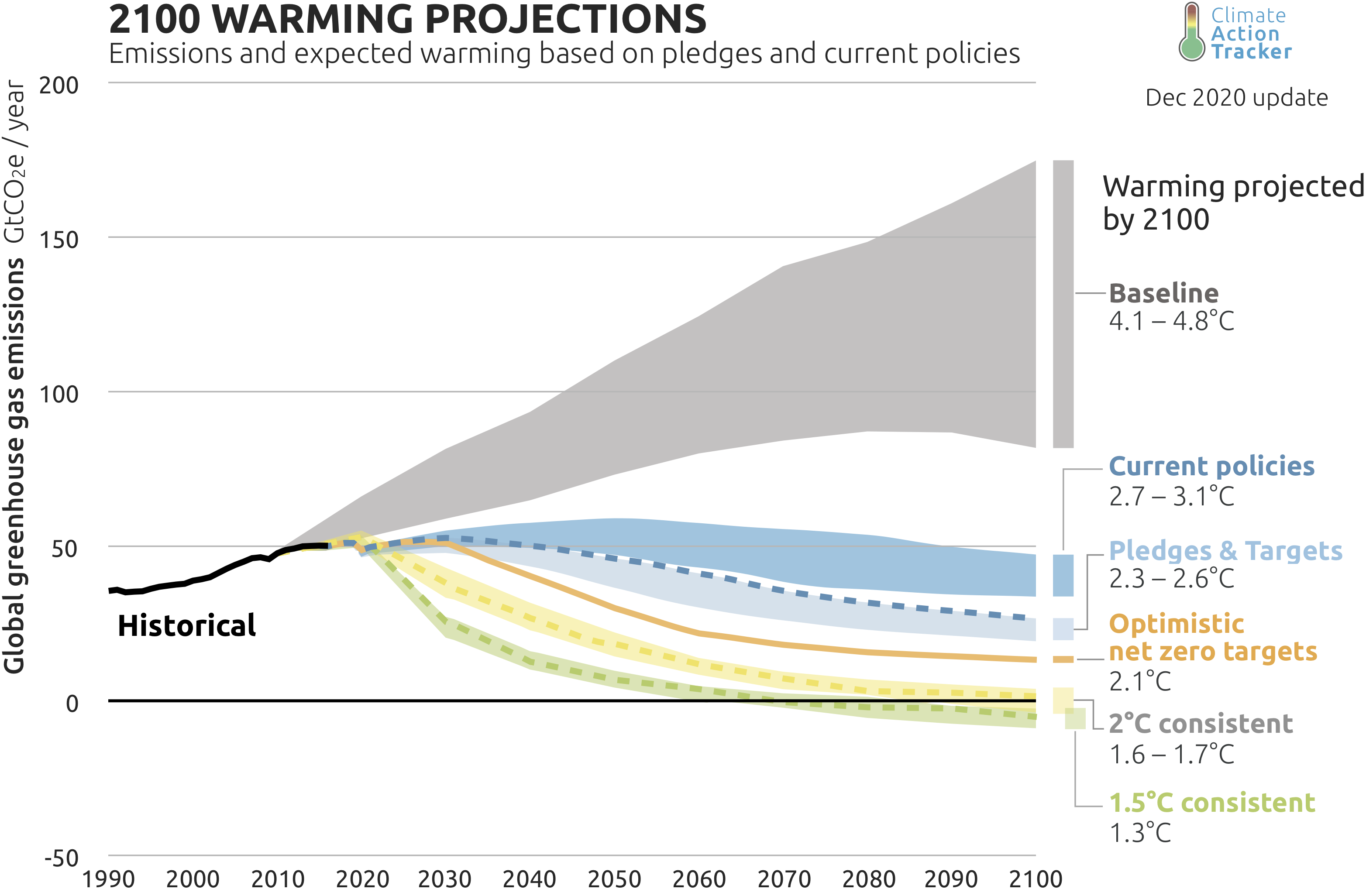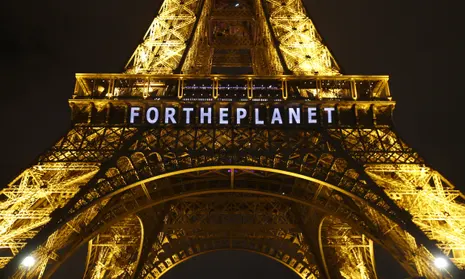Paris Climate Accord, and New Net Zero Targets |
NDCs and Net Zero Pledges |
At COP21, commonly referred to as the Paris Climate Accord, nations sent representatives to pledge greenhouse gas emissions (GHGs) reduction targets (also known as Nationally Determined Contributions, or NDCs). At the annual Conference of the Parties (COP) of the United Nations Framework Convention on Climate Change (UNFCCC), national dignitaries & diplomats from every UNFCCC member nation convene to assess and calibrate their NDCs.
The first concrete NDCs by UNFCCC member nations were made at the COP21 in Paris 2015, and have since evolved with the latest scientific guidance from the Intergovernmental Panel on Climate Change (IPCC); ideally to the most ambitious GHG reduction pledge a nation can possibly make - a carbon neutrality pledge (net zero GHGs).
In order to FULLY participate in the Paris Climate Accord, EVERY member nation to the UNFCCC must submit Intended Nationally Determined Contributions of GHG reduction pledges for their country;. These pledges must be approved by the UNFCCC, and then pledges turn into official Nationally Determined Contributions.
NDCs are encouraged by the UN to get increasingly ambitious each time they are submitted; and especially every 5 years, when every UNFCCC member is required to submit revised NDCs. Based on the latest scientific guidance from the IPCC, now many nations have net zero (carbon neutrality) targets in addition to their NDC.
As climate science has evolved over the last few years, GHG reduction targets have become more ambitious; and this is reflected in ambitious targets such as the European Union's pledge to cut carbon emissions to 55% of 1990 levels by 2030; on its way to net zero by 2050. President Biden has pledged that the United States will have 100% carbon free energy on its electric grids by 2035; on its path to net zero.
Many developed nations, including the EU group of countries, the US, the UK, other European nations & Japan, have set ambitious targets to reach net zero GHG emissions by 2050; China has set their net zero target date at 2060.
The Paris Climate Accord is not legally binding, so actual binding NDCs must originate from national, state, and regional, governments (when not put forward by a national government, but rather by state or regional governments; these commitments are simply referred to as GHG reduction pledges, or carbon reduction pledges).
In the case of the EU, NDC targets and net zero targets are codified into law by legislation that is passed by the European Commission. Several European governments have also independently passed ambitious climate legislation including NDCs and net zero targets.
The United States federal government has the executive commitment of President Biden to ambitious climate pledges (as of 2021), but Congress hasn't yet passed legislation committing to NDCs or a net zero target like the EU (as well as several European nations independently).
However, individual states (such as California and several others) have passed GHG reduction targets and net zero targets state-wide; through State Congresses as binding legislation. It is expected that all NDC and net zero commitments that the Chinese national government makes, will be codified into legally binding law in China. In fact, over 100 countries worldwide have joined an alliance aiming for net zero emissions by 2050.
China has set its net zero target for 2060; and soon thereafter, the US committed to net zero by 2050 (historically, China & the US are the 2 biggest emitters of GHGs); and both of these net zero commitments followed the earlier European carbon neutrality pledges. China set their net zero target in September 2020; while the US net zero pledge was made by President Biden upon taking office, in January 2021.
These net zero pledges represent ambitious goals to keep global warming well below 2°C (that’s 2°C rise above pre-industrial global temperature averages), and ideally to 1.5°C this century; making good on the latest IPCC climate targets. Here is a map from BloombergNEF with countries' various degrees of progress to net zero:

COP21 - The Paris Climate Accord
On December 12, 2015, high-level representatives from 197 nations, including many presidents and prime ministers, agreed to try to hold global warming "well below” 2 °C above pre-industrial temperatures. Clean and renewable energy targets, energy efficiency technologies for nations and industries, concerted efforts in green building, and sustainable mass transit; are among many means the UNFCC advises nations to invest in to help create a more sustainable planet. On November 4, 2016, the agreement took full effect (once nations representing a majority of the planet’s GHG emissions signed the agreement).
Unfortunately, the truth is that, even if the original Paris Climate Accord is carried out by every nation, and to the letter, global temperatures will still be on course to rise by around 2.7-3.1°C by the end of the century. Thus, the need for more ambitious GHG reduction pledges; ideally national commitments to net zero emissions, are necessary. Every world nation (with a few exceptions), UNFCC members, originally signed the agreement, and 190 have ratified and pledged NDCs.
The Breakthrough Energy Coalition
 Breakthrough - The Paris Climate Accord did produce lasting positive momentum for global action on climate change. Arguably, the best news of the entire COP21 came on Day 1 of COP21, with the announcement of the Breakthrough Energy Coalition (breakthroughenergy.com). The Breakthrough Energy Coalition, known as Breakthrough Energy Ventures (BEV), is a group of more than 20 billionaires started by Bill Gates (including Bill Gates, Jeff Bezos, Richard Branson, Mark Zuckerberg {CEO of Facebook}, and others), who have organized to invest substantial sums in innovative clean energy.
Breakthrough - The Paris Climate Accord did produce lasting positive momentum for global action on climate change. Arguably, the best news of the entire COP21 came on Day 1 of COP21, with the announcement of the Breakthrough Energy Coalition (breakthroughenergy.com). The Breakthrough Energy Coalition, known as Breakthrough Energy Ventures (BEV), is a group of more than 20 billionaires started by Bill Gates (including Bill Gates, Jeff Bezos, Richard Branson, Mark Zuckerberg {CEO of Facebook}, and others), who have organized to invest substantial sums in innovative clean energy.
The Coalition wouldn’t be able to fund and meet all of its goals without the most important international commitment by governments to invest in clean energy to date; Mission Innovation. Mission Innovation (mission-innovation.net) is a group of 20 countries including the U.S., Brazil, China, Japan, Germany, France, Saudi Arabia, and South Korea; who have pledged to double government investment in clean energy innovation and to be transparent about its clean energy research and development efforts. In a statement from BEV, the importance of both groups is highlighted –
“THE WORLD NEEDS WIDELY AVAILABLE ENERGY that is reliable, affordable and does not produce carbon. The only way to accomplish that goal is by developing new tools to power the world. That innovation will result from a dramatically scaled up public research pipeline linked to truly patient, flexible investments committed to developing the technologies that will create a new energy mix. The Breakthrough Energy Coalition is working together with a growing group of visionary countries who are significantly increasing their public research pipeline through the Mission Innovation initiative to make that future a reality.” - quote from The Breakthrough Energy Coalition
The High Ambition Coalition
The High Ambition Coalition (HAC) is a group of over 40 developing countries formed by UNFCCC members determined to create an equitable distribution of responsibility for ambitious climate action, and a fair distribution of UN clean energy resources; fairer distribution among poorer nations and richer, developed, industrialized nations. The HAC initially included smaller, poorer nations such as the Marshall Islands, the nation that originally formed the HAC.
"The Republic of the Marshall Islands (RMI) formed the High Ambition Coalition in run-up negotiations at the UNFCCC to the Paris Agreement in 2015, helping to secure key elements of the deal, including the 1.5°C temperature goal, the net zero global emissions pathway by the second half of the century, and a five-year cycle for updating mitigation contributions.
Since then, the HAC has worked to realize the promises of the Paris Agreement it came together to deliver. The work has accelerated and expanded in scope, driving forward ambitious global climate action. And the science has only become clearer since Paris, underscoring the imperative of keeping global temperature increase to 1.5°C if we are to avert the most severe impacts of climate change." quote from - highambitioncoalition.org/work
Main contributions by the HAC include the ambitious target of 1.5°C, and the 5-year cycle for UNFCC members to submit revised pledges. COP26 in Glasgow is the first such mandatory revision of nationally determined contributions to GHG reduction, as 2015 was a low-profile virtual meeting due to COVID-19.
The European Union is the highest-profile, and richest, group of nations to join the HAC. The HAC consists mostly of developing nations; such as Mexico, Argentina, Costa Rica, and Ethiopia; and smaller, developing island-nations such as Jamaica and Fiji. With Canada joining the HAC in September 2020, the HAC is comprised of over 40 nations; but the focus of the coalition remains equity for developing nations in the Paris Climate Accord's future dealings.
Historically, since larger, richer nations have profited from industrialization at the expense of the global climate; the responsibility for climate change is greater for developed nations, and these nations should bear more of the financial burden stemming from the global transition from fossil fuels to clean energy.
Current Climate Policies Projection
How are current climate policies worldwide, current GHG reduction targets (nationally determined contributions), going to actually reduce global GHGs as world nations try to achieve net zero GHGs (carbon neutrality) in order to stop global warming? This chart, from Climate Action Tracker (CAT), models current climate policy outcomes, as well as optimistic net zero targets, to 2100>>>

Below are some major resources for more information on the COP21:
newsroom.unfccc.int/lpaa/innovation/lpaa-focus-on-innovation-government-and-private-sector-leaders-announce-commitments-and-partnerships-to-increase-rd-for-low-carbon-technologies
COP21 Paris – breakdown of the event
